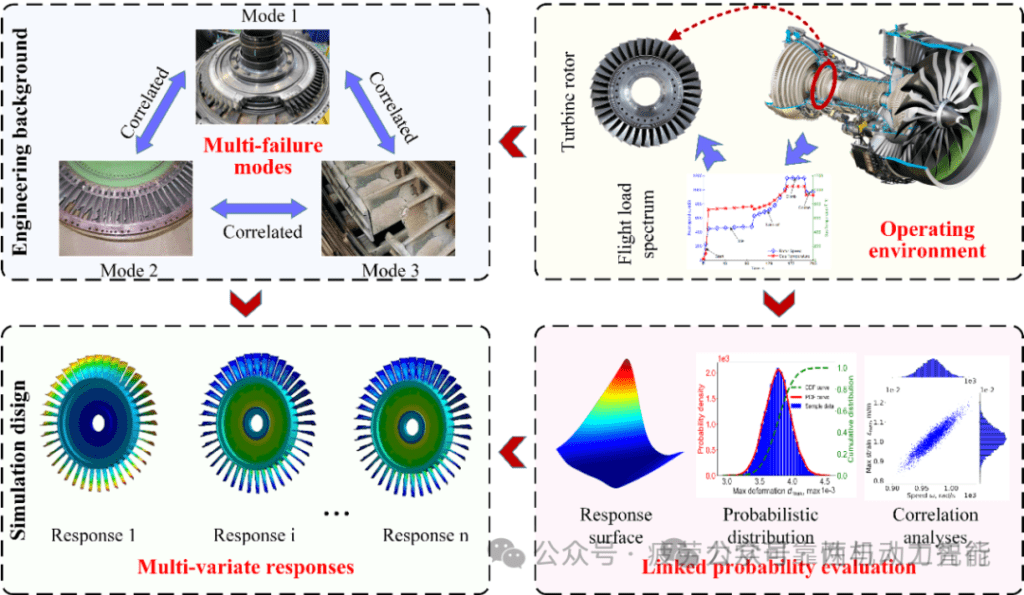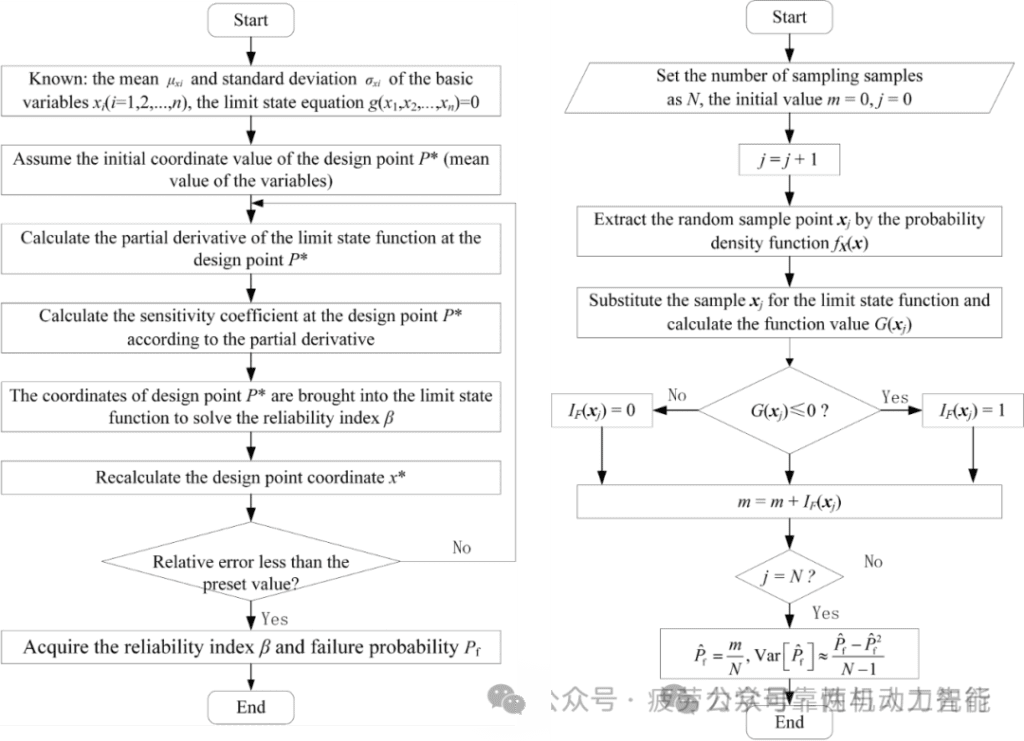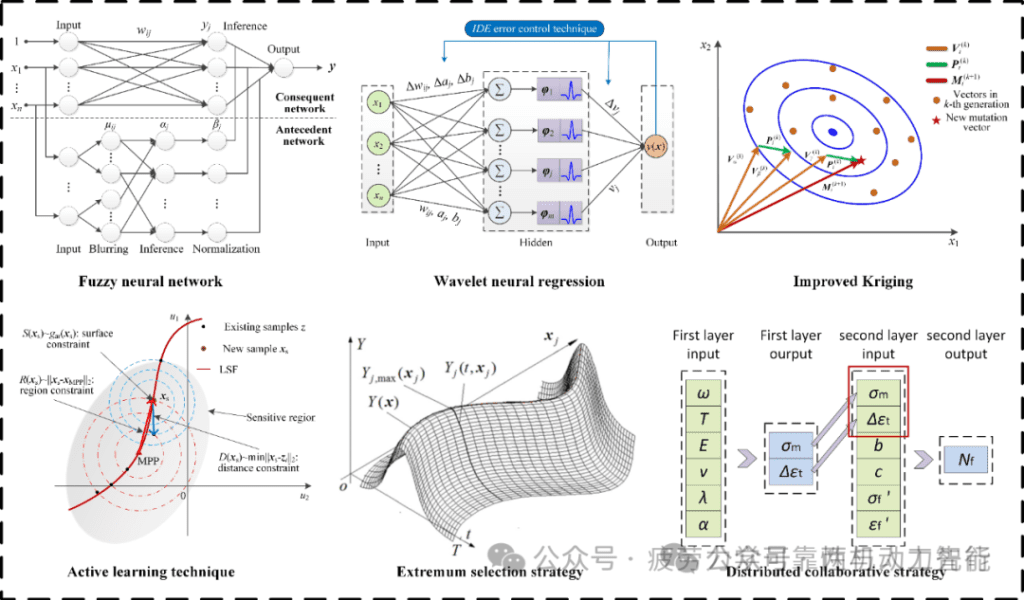As a key rotating component of an aero-engine, the rotor system works in a harsh environment of high temperature, high pressure and high speed for a long time, and needs to meet a series of demanding and contradictory indicators such as long life, light weight and high reliability. Under the influence of multiple random factors such as multi-field loads, material properties and model parameters, the stress-strain and fatigue life responses of the rotor system often show large dispersion. Its refined failure assessment and reliability analysis have become key technologies in the development of advanced aero-engines. This paper first discusses the current commonly used reliability analysis methods and their modeling ideas, and introduces several cutting-edge surrogate model methods; then, taking a typical turbine rotor system as an example, the advantages, disadvantages and limitations of several commonly used reliability analysis methods are analyzed. The analysis results show that the surrogate model method has great potential in high-precision prediction performance and no need for large-scale simulation calculations. It points out that sampling technology, model form and construction strategy are the key links that affect the accuracy and efficiency of the surrogate model, thus pointing out the future development direction for the application of the surrogate model method in the reliability analysis of rotor systems.

Approximate analytical method/digital simulation method: This review systematically introduces approximate analytical methods such as the primary reliability method and the secondary reliability method and digital simulation methods represented by the Monte Carlo method. For the reliability analysis of aircraft engine rotor systems, the approximate analytical method has the defect of being difficult to accurately approximate the tail characteristics of the probability density function, and the digital simulation method is prone to low computational efficiency due to the need to call a large number of real nonlinear limit state functions. Figure 1 shows the detailed reliability analysis process of the two methods.


Surrogate model method: Constructing accurate and efficient mathematical models to replace high-dimensional, nonlinear implicit limit state functions is an important way to solve the reliability analysis problems of complex structures such as aircraft engine rotor systems. First, traditional surrogate models such as polynomial functions, Kriging models, support vector machines, and BP neural networks are summarized, and their modeling process and analysis principles are given; then, from the perspectives of sampling technology, model form, and construction strategy, several more cutting-edge surrogate models such as active learning technology, fuzzy neural networks, wavelet network regression, optimized Kriging, extreme value selection strategy, and distributed collaborative strategy are introduced, indicating the potential research direction of the surrogate model method. Follow the official account: Two-machine power first, get a large amount of two-machine information for free, and focus on the key technologies of the two machines!


Reliability analysis of turbine rotor system: Under the coupling of multiple physical fields such as fluid-solid-heat, the blade root, rim, disk center and other parts of the turbine rotor will produce various failure modes such as low-cycle fatigue, high-cycle fatigue, and high-temperature creep. Its reliability analysis is a complex analysis problem involving multi-physical field coupling and multiple failure modes. This paper takes a typical turbine rotor system as an example, uses several cutting-edge surrogate model methods to analyze and evaluate its reliability and reliability sensitivity, and summarizes the advantages and disadvantages of various surrogate model methods in the reliability analysis of turbine rotor systems. Figure 3 shows the reliability analysis process of the turbine rotor system based on the surrogate model.


The main conclusions and prospects are as follows:
This paper systematically introduces three common reliability analysis methods, namely approximate analytical method, numerical simulation method and surrogate model method, discusses the advantages, disadvantages, limitations and scope of application of each method, points out the superiority of surrogate model method in reliability analysis problems involving complex and highly nonlinear implicit functional functions, and provides guidance with reference significance for using surrogate model method to solve the reliability analysis problems of aircraft engine rotor system. Follow the official account: Two-machine power first, get a large amount of two-machine data for free, and focus on the key technologies of two-machine!
In addition, starting from the calculation accuracy and calculation efficiency, this paper condenses the three key modeling links that determine the effectiveness of the surrogate model: sampling technology, model form, and construction strategy. Through an in-depth discussion of a variety of cutting-edge reliability methods emerging in each modeling link, it is pointed out that by organically combining sampling technology, model form, and construction strategy, the modeling cost can be effectively reduced while ensuring the calculation accuracy. For complex structural reliability analysis problems such as aircraft engine rotor systems, how to further improve the credibility of aircraft engine rotor system reliability analysis around these three key modeling links is worthy of further study.
